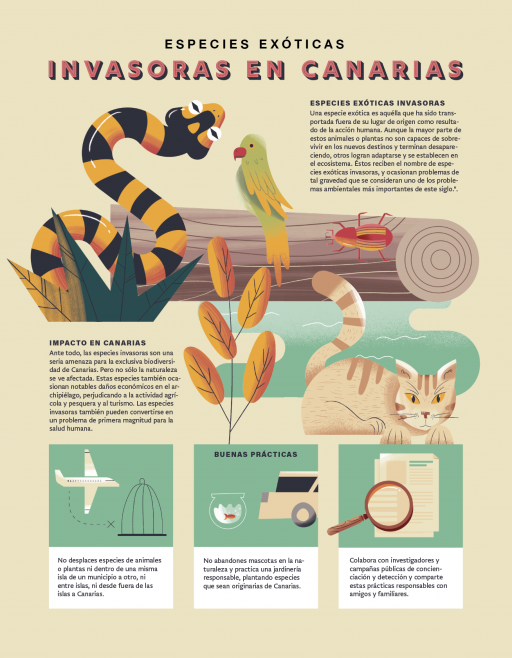Measures to halt the invasion by alien exotic species
The introduction of non-native species into the Canary Islands may jeopardize the proper functioning of their ecosystems and the survival of endemic species.
Humanity should ensure that terrestrial ecosystems are properly managed, but this is unviable without action against one of the main environmental problems we are facing: the introduction of invasive alien species. Sustainable Development Goal 15 highlights the problems that can arise when a living being is introduced into a habitat that is not its own, given that its action can actually lead to a loss of biodiversity. If these species manage to adapt and establish themselves in their new destination, they end up causing great harm to the local species and natural environment, to the economy and to public health.
The Canary Islands are in no way exempt from this problem. Alien species have arrived, and continue to arrive in the islands by sea, air or land routes. Some are introduced intentionally to be used in agriculture and others as pets in Canarian homes, although there are as many entry routes as there are ways of arriving in the archipelago. They can also do so accidentally, as stowaways in trees, plants and their soil imported for the islands' gardens or in other goods transported in ships.
Invasive species are a serious threat to the unique biodiversity of the Islands. A very large number of endemic species are now threatened by the spread of some invasive species, that eat them directly, compete with them for resources or territory, or transmit new diseases to them. The damage to nature is however only the first step. As these new species become established in the archipelago, they also endanger the lifestyle of its human inhabitants by causing considerable damage to economic activities such as agriculture and fishing, and even endangering buildings and public health.
Knowing these dangers, the best weapon we have is prevention. That is to say, not to move animals or plants from one municipality of the island to another, nor between islands, nor from other communities or countries to the Canaries. With collaboration by citizens, there are networks such as the RedExos application that allows us to detect or report invasive species. There are also schemes, such as that for localized 'cat's tail' grass (Pennisetum) eradication, in which people can actively participate.
In addition to all this, the Ecology and Evolution on Islands group at the Institute of Natural Products and Agrobiology (IPNA-CSIC) is researching new methods to understand and improve the management of these exotic species on the islands. They study the impact of invasive species in the Canary Islands and search for more effective solutions to detect, control or eradicate them. This has already helped the local administrations to take measures against these animals or plants that have unwittingly ended up on our islands.

